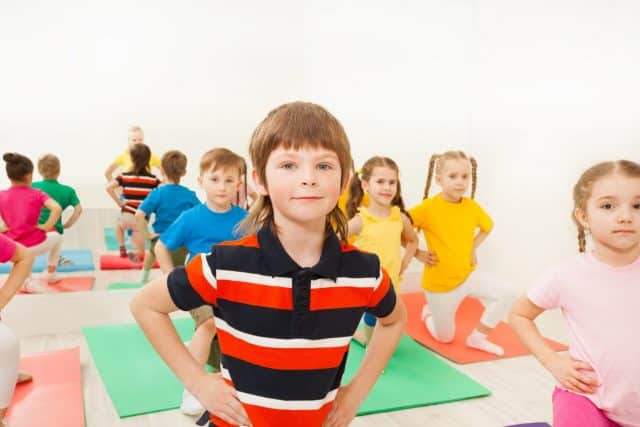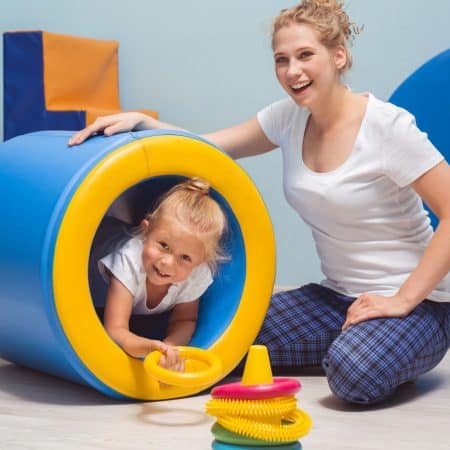The benefits of physical activity cover the physical, psychological and social domains of wellbeing (Sowa & Meulenbroek 2012), writes researcher Julie Peake.
Physical activity can include activities such as walking, swimming, surfing, horse-riding, dancing, playing catch, kapa haka, skateboarding, bike riding, yoga, jogging, and weight training to name a few!! Technology can also facilitate physical activity, for example Nintendo Wii and other games that involve physical movement.
Choice of activity will depend on factors including accessibility, cost, enjoyment and personal abilities such as balance, postural stability, joint flexibility, gait, and movement speed.
The article “Five Benefits of Physical Activity for Children with Autism” available online from American based organisation Be the Best Sport, is an excellent plain language article well worth reading.
This article outlines the benefits of exercise for children as: a reduction in stereotypic (self-stimulatory behaviours), improved social skills, helps establish routines, weight management, and improved attention.
Summary of the research.
Systematic review of the literature showed benefits of physical activity are improved motor-skills, skill-related fitness, social functioning and muscular strength and endurance (Healy, 2018). Evidence of benefits in cognitive, language and sensory motor functioning remains limited and further research is required (Sorensen & Zarrett, 2014).
Lalonde and others (2014) focused on the physical activity walking, stating that walking is a simple, convenient and inexpensive way to exercise. They suggested simple strategies such as goal setting and reinforcement are potential ways of increasing exercise participation. Pedometers were used to set and monitor daily goals. Access to valued physical objects or activities acted as reinforcement for meeting those goals. Other ways to encourage physical activity identified by Sorensen & Zarrett (2014) include prompting, modelling, praising and structured teaching interventions.
Healy (2013) interviewed 12 children between the ages of 9-13 years with autism to find out their views on physical education. Children said they enjoyed making friends and spending time with other children. In other words, they enjoyed the social benefits of friendship and camaraderie. Healy said creating inclusive physical education environments and establishing positive experiences of physical activity in childhood are important factors in promoting positive views of physical activity.
Factors to consider. Some factors to consider when thinking about suitable physical activity for those with autism.
- Sensory
- Behavioural
- Social
- Cognition
- Speech, hearing & communication
- Neurological and seizures
- Inclusion
- Current health & abilities
- Activity schedule and daily routines
Healy (2018) suggests starting small and spacing activities during the day may make them easier to maintain. Some suggestions are walking to school or work, walking the dog if you have one, making TV ad breaks exercise breaks for children and adults (e.g star jumps when the ads come on) and regular family trips to the local playground after dinner. Healy also suggests building motor skills in children so they can successfully participate in physical activity is essential. For example, practicing skills at home with your children can support success in a physical activity class at school.
Healy provides the following tips for making physical activities autism friendly.
- Someone who understands – if children and teens are involved in structured physical activity programs the facilitators should understand how to communicate and motivate in ways that are autism friendly. This could take the form of a “peer tutor”, for example another child who understands how to communicate with children with autism and can provided some 1-1 support
- Get visual – visual supports such as task cards, physical demonstrations and video modelling can prove helpful to people with autism who are visual learners
- Routine – create a regular and predictable structure into any physical activity programme – visual schedules may support establishing a good routine
Some suggestions from our Consumer Reference Group are:
- Parents need to participate as well and demonstrate 1-1 to show children the desired skills – for example if playing soccer kicking the ball around and showing how to block the ball if you are the goalie
- Join a club – this helps develop social skills and widens the opportunity to meet new friends with similar interests
- If joining a club, talk with the coaches – it is important that they want to support your child as well.
Keep an eye out for autism friendly classes or groups in your area. Other parents can often be the best source of local knowledge.
Establishing and sustaining a routine of physical activity can be likened to a savings account – an investment of sorts, in your future quality of life. I am reminded of a saying that has helped keep my views of physical activity in perspective – you don’t have to take exercise seriously, just regularly.

Researcher, Altogether Autism
B Soc. Sci (Hons) (Psychology and Sociology)
Dip Social Work
PG Dip SSS
View article Screen time for children on the autism spectrum also written by Julie Peake
References
Healy, S. (2013). ‘Happy and a bit nervous: the experiences of children with autism in physical education. British Journal of Learning Disabilities, 41, 222-228.
Healy, S., Nacario, A., Braithwaite, R., Hopper, C. (2018). The effect of physical activity interventions on youth with autism spectrum disorder: A meta-analysis. Autism Research, International society for Autism Research.
Lalonde, K., MacNeill, B., Eversole, L., Ragotzy, S., Poling, A. (2014). Increasing physical activity in young adults with autism spectrum disorders. Research in Autism Spectrum Disorders, 8, 1679 -1684.
Sorensen, C., Zarrett, N. (2104). Benefits of physical activity for adolescents with autism spectrum disorders: A comprehensive review. Autism Developmental Disorders 1 344-353.
Sowa, M & Meulenbroek, R. (2012). Effects of physical exercise on Autism Spectrum Disorders: A meta-analysis. Research in Autism Spectrum Disorders, 6, 46-57.




